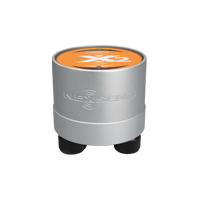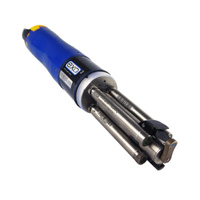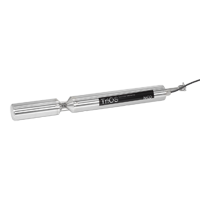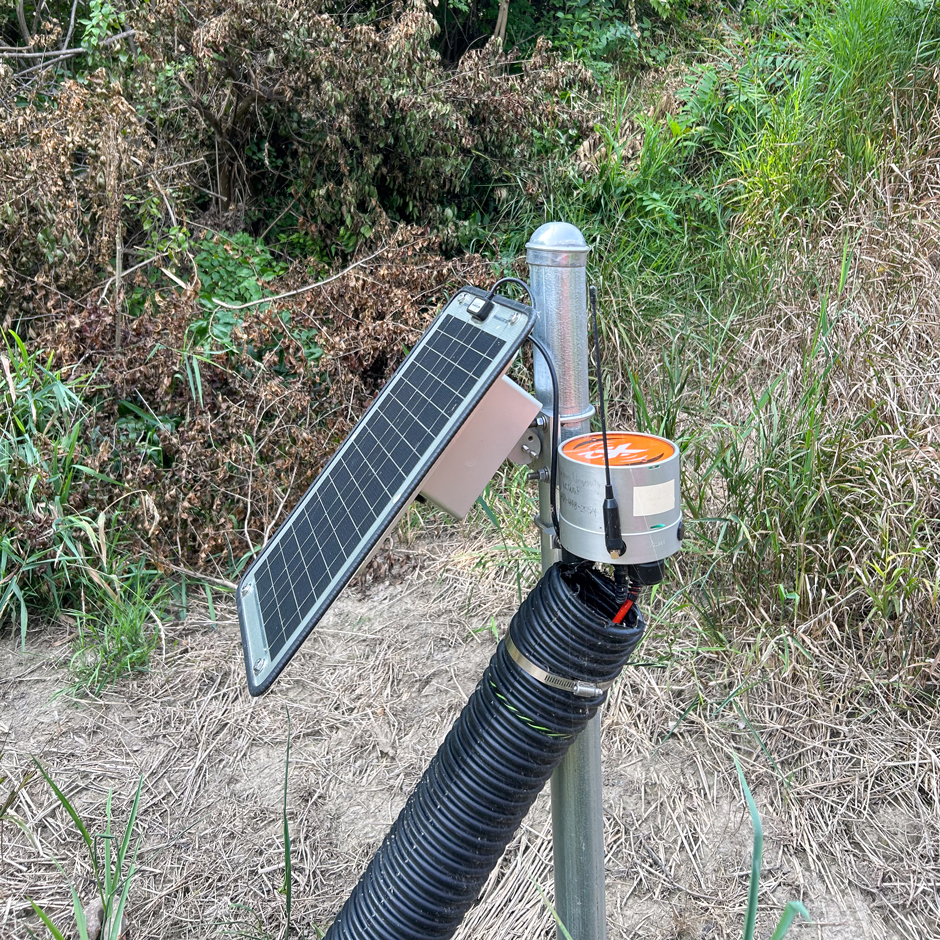 Tributaries of the Great Lakes contribute to the largest freshwater source in the U.S., and with the trillions of gallons of water transported each year are a variety of nutrients carried by source waters. Sources like the Maumee River are inundated by nutrient loads in the form of runoff from agriculture and urban waste-water effluent, carrying phosphorus and nitrogen to Lake Erie via the tributaries.
Tributaries of the Great Lakes contribute to the largest freshwater source in the U.S., and with the trillions of gallons of water transported each year are a variety of nutrients carried by source waters. Sources like the Maumee River are inundated by nutrient loads in the form of runoff from agriculture and urban waste-water effluent, carrying phosphorus and nitrogen to Lake Erie via the tributaries.
These nutrients encourage algae growth contributing to the annual algal blooms observed in the western basin of Lake Erie. Federal and state agencies have invested a great deal of money and resources into researching these blooms and developing a means of predicting them.
One such program is the Heidelberg Tributary Loading Program (HTLP) which tracks the movement of nutrients like nitrogen in the various tributaries that contribute water to Lake Erie. The program is comprised of 23 sampling sites, 16 of which flow into Lake Erie, that measure water quality and report data publicly through their data portal.
Challenge: Making Data Accessible
Before the introduction of real-time technology, the data gathered at each of these sites was limited to the abilities of automated samplers to collect samples that were analyzed in the lab, which provided vital data on nutrient movement but was largely limited by the slower turnaround of nitrate data. With the program’s area being so expansive, it was also difficult to maintain each of the sites, which could lead to the loss of valuable data.
Each sampling site is a building near the river where a pump in the river delivers water up into the sampling tank and then back out into the river. The tube that transports the water can become clogged, meaning that data can be lost in the time it takes for the team to realize the problem.
Each site includes an ISCO sampler that collects samples throughout the day at noon, eight in the evening and four in the morning. While these samples can reveal important water quality trends in the data, they don’t necessarily indicate nutrient movement throughout the day at a real-time frequency.
Historically, the network hadn’t collected many of the baseline water quality parameters, such as dissolved oxygen, turbidity, temperature, or pH. With the addition of these parameters and data from the nitrate sensors, the HTLP would be able to fill in gaps between sample collections.
In addition to the technical challenges, making the data collected by the HTLP available to the public and related agencies is a crucial element of the program. Jakob Boehler, field manager for the National Center for Water Quality Research (NCWQR) at Heidelberg University, helps operate the HTLP and is also actively involved in educating the public on the data reported by the program.
Solution: Real-Time Monitoring and Inter-Agency Partnerships
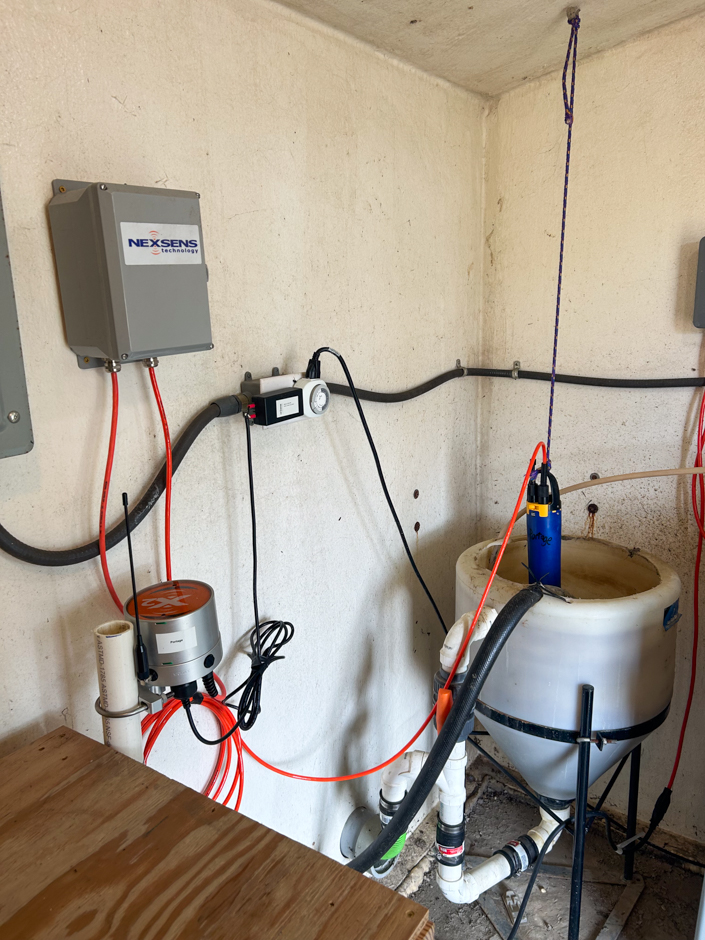
The introduction of the NexSens X2 Data Logger and YSI EXO 3 Sonde or TriOS NICO UV Nitrate Sensor have helped combat these challenges. Data from the sensors is logged by the X2 and then transferred to the WQData LIVE database, where Boehler and his team can easily view data.
The remote capabilities offered by NexSens systems make monitoring each site easy, as they can quickly log on and view trends. WQData LIVE also offers alarms that alert the team of any low or high levels, indicating a potential runoff event increasing the concentration of nutrients in the stream or an issue with the pump supplying water to the sampling station.
The sensors and real-time monitoring help paint a more comprehensive view of the tributaries as more common parameters cannot be accurately assessed using discrete sampling that is measured after a few days, compared to the sensors, which report data immediately and continuously.
While the sensors have made some elements of monitoring the tributaries easier, Heidelberg still measures some parameters in the lab in order to ensure accuracy. This additional assessment further supports data collected by the real-time network and vice-versa.
In addition to the HTLP, Lake Erie is monitored by a plethora of buoys deployed by various research agencies, who use the same sensor technology utilized by the Heidelberg system. Using the same technology makes direct data comparison and compilation much simpler as the same instruments are used across the lake.
Benefits: Troubleshooting and Transparency
In terms of troubleshooting, the alarms offered by WQData LIVE can notify the team when water to the station has stopped flowing due to a mechanical issue. For example, a sudden drop in conductivity would signify a potential block in the water pipe, allowing the researchers to travel to the site to correct the issue right away. If only the ISCO samplers were being used without an X2 data logger, the team would likely only notice an issue once they had made it out into the field—meaning the potential loss of up to a week’s worth of data.
The integration of the sensors has also helped to avoid data loss. If there are any problems with a sample in the lab and a measurement is lost, the water quality data collected by the sensors can help fill in the gaps. For example, turbidity is an indicator of high-sediment loads, helping to supplement the data that could be obtained from the samplers. Data from the sonde can also help identify spikes in various parameters between sampling times.
Having everything available online through WQData LIVE allows for easy sharing between administrators, agencies and the Heidelberg team—data that will help support each group’s efforts. At the same time, the data is accessible to the public through GLOS’ Seagull platform, which the public can access and view at any time.
Accessibility includes making the data meaningful for the average viewer. Fortunately, the ease that real-time technology offers opens time for more educational opportunities. Boehler got a Master’s in Education in order to be able to communicate water quality data with the public more effectively.
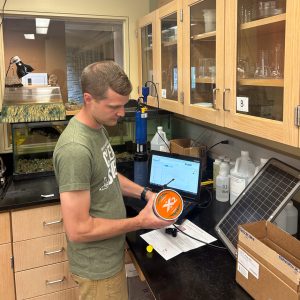 “Even though our data is freely available, we don’t necessarily want people to just download it and make their own assumptions about it. We want to help educate people to understand what the data really means so they’re using it properly,” states Boehler.
“Even though our data is freely available, we don’t necessarily want people to just download it and make their own assumptions about it. We want to help educate people to understand what the data really means so they’re using it properly,” states Boehler.
The Bottom Line
The HTLP is the oldest long-term monitoring system of its kind, and the success of the program has largely relied on the Heidelberg team as well as support and funding from state and federal agencies along with local municipalities and other stakeholders.
The state relies on the data provided by the HTLP to inform policy decisions and track the effectiveness of water quality programs, and as such, the program has been assigned a line on the annual state budget. In addition to state funding, the HTLP is supported by nine different funds in order to provide continuous data on the tributaries.
Boehler explains, “It’s nice knowing that the work that I do makes a difference in the community to help people better understand water quality, what’s going on in their local streams, and helping to drive policy decisions. He expands, “I’m not just making data for the sake of making data—we like to know that it’s getting used—is important and rewarding.”
Heidelberg was one of the first places to focus on nutrient movement through freshwater, and the long-term data gathered over the past 50 years has been instrumental in shaping future research on nutrient dynamics. The continuous flow of long-term data empowered by NexSens Technology will continue to support the HTLP, which represents decades of monitoring by a team of dedicated researchers.
Equipment
The NexSens X2 Environmental Data Logger offers the latest in real-time monitoring technology with wireless communication, large plug-and-play sensor library, and ultra-low power consumption.
WQData LIVE is a web-based project management service that allows users 24/7 instant access to data collected from remote telemetry systems.
The YSI EXO3 is a purpose-built sonde for monitoring major water quality parameters, including: pH, conductivity, temperature, turbidity and dissolved oxygen.
The TriOS NICO is a low-cost UV photometer for online measurement of nitrate in lakes/rivers, drinking water, and wastewater applications.

